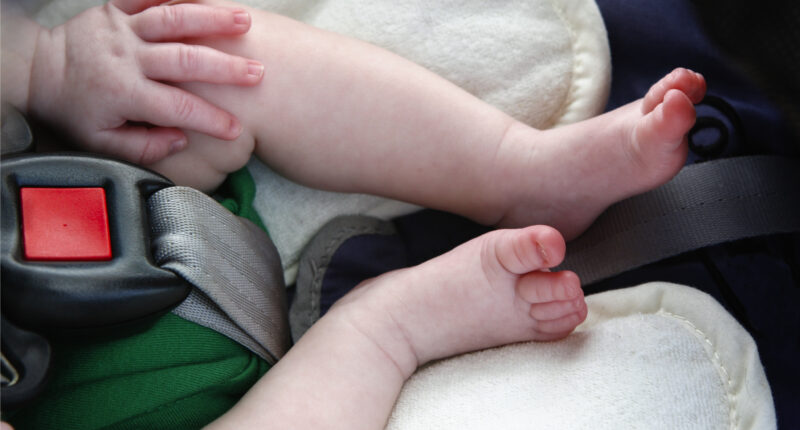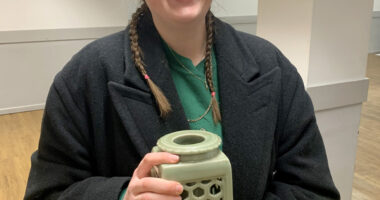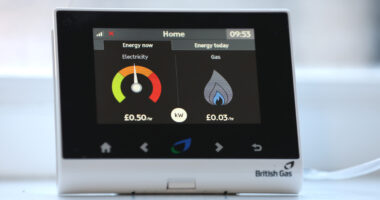PARENTS are being warned about buying used items for kids on sites like Vinted and eBay.
Second-hand shopping can be a savvy way to save money – but experts have urged parents to be careful when it comes to car seats.
Personal injury experts at Fletchers Group have warned of the dangers and possible risks of buying pre-owned car seats.
The safety must-haves can be pretty expensive costing anything from £40 to £170 at most retailers.
It means that many parents may be tempted to save cash by browsing online marketplaces instead and buying them from second-hand sellers.
Natalie Hitchins, Which? home products and services editor, said: “It is tempting to opt for second hand when planning for a new baby, and while this is a great idea when it comes to toys and clothes, buying a pre-owned car seat is generally not recommended because even if it looks completely fine, hairline cracks or fractures could mean it won’t protect your child in a crash.


“If you’re borrowing or buying a car seat from someone you know and trust, you’ll still need to be sure of the history of the seat to make sure it’s safe – older seats may not comply with the latest safety regulations and might be missing the instruction booklet that tells you how to install and adjust the seat safely.”
There are things you should be aware of if you’re looking to buy second-hand and are browsing sites like Vinted, Facebook Marketplace, eBay, Depop or even car boot sales and charity shops.
A spokesperson for eBay told The Sun that it has “no tolerance for unsafe, banned or recalled items to be listed”.
While Vinted said it requires that all items must be lawfully placed on the UK market before they can be listed on the platform.
Most read in Money
The experts at Fletchers Group have revealed the four key things to always look for so you can make the right decision for your little-one.
Expired dates
It may seem unusual for a car seat to expire, but most will have a lifetime of around six years depending on the manufacturer.
This is due to car seats becoming more unsafe over time, and this can happen because of various reasons and might not be obvious when you first buy one.
Child seat manufacturers have determined expiration dates for their restraints – a minimum of six years from the date of manufacture – which is stamped on the restraint.
Just because a seat might be listed as brand new doesn’t mean it necessarily is, so do try to check the expiration date and ask the seller for proof of purchase if necessary.
With continual use, a car seat can become damaged or weakened which in turn, could compromise its ability to keep your child safe.
Although a used car seat may appear undamaged when first bought, you are far more likely to need to replace it much sooner than if you had just opted for a new model.
Expiration dates can also take into account changing safety regulations.
In the UK and EU, car seats are regulated based on height or width.
Height-based car seats are referred to as i-Seats and approved models can be identified by the R129 label.
Approved weight-based models can be identified by a R44/03 or R44/04 label.
Second-hand car seats are more likely to fall under outdated regulations or may not be regulated at all.
If you cannot find the expiration date stamped on your car seat, you can call the manufacturer and provide them with the date of manufacture and model number, to determine the expiration date.
Compatibility issues
If the car seat you buy doesn’t actually fit your car properly, it can heavily increase the risk to your child.
Whilst car seats are designed to fit any car no matter the make, there may be some instances in which the layout of the car and the design of the seat are unsuited to one another.
Whether it’s the seat belt configuration, the seat spacing or the position of the cushions, these are all factors that can impact your ability to fit your child’s car seat safely and securely.
This issue can occur in new seats, but Fletchers Group said it is “far more prominent” in second-hand car seats.
This is because older seats are designed to fit older cars, and with improved safety features often meaning that newer car models have updated layouts, there’s a higher chance that your second-hand car seat will be incompatible with these changes.
It’s best to be vigilant and try before you buy.
Taking the time to test the seat in your car will not only save you from making an unusable purchase, but avoid any accidents that could have ultimately been prevented.
No instruction manual
More often than not if you’re buying a pre-owned car seat then it won’t come in its original box, let alone an instruction manual.
This is a key safety feature to make sure the seat is installed properly and so you know how to use it.
One of the most common problems that parents find with second-hand car seats is that the manual is missing and therefore, that they have to rely on guesswork in order to set the seat up.
These manuals include vital safety guidelines and precautions specific to that particular car seat model.
Without this information, parents may be unknowingly putting their child at risk of encountering potential hazards and instances of misuse.
Of course if you do buy a used seat and it doesn’t come instructions, you may be able to have a look online for how to install it and further information.
If this doesn’t work you should call the manufacturer with any concerns.
Recalled seats
A car seat could be pulled off shelves due to being recalled for a number of reasons.
These include defective components, installation or labelling issues, known cases of incidents or injuries, quality control or production issues, and changes in law or safety standards.
The danger is that when recalling a product, the manufacturer will often contact the original purchaser to make them aware of the situation.
But, if you didn’t purchase the seat directly from the manufacturer or aren’t registered as the product’s new owner – you might not get this relayed to you.
Likewise, the news surrounding car seat recalls can take a while to reach resellers or fall out of circulation by the time a consumer purchases a used seat.
Subsequently, deciding to buy your child’s car seat second-hand increases the likelihood of accidentally owning a product that is actually not fit for use.
If you have any concerns about the particular product you want to buy, it’s definitely worth Googling it first to see if any recall notices have been issued in association with it.
What do the platforms say?
A spokesperson for eBay told The Sun: “We take the safety of our users extremely seriously, and we have no tolerance for unsafe, banned or recalled items to be listed on our marketplace.
“Pre-owned or used car seats are prohibited from our site and we have block filter algorithms in place to prevent these products from being listed. These filters block millions of listings every year and are updated on a regular basis.
“On the rare occasion that an unsafe product does make it onto site, we swiftly remove it and provide product safety education to sellers to prevent relisting; only sellers that meet certain criteria can sell new car seats that meet the applicable safety standards and regulations.”
A spokesperson for Vinted said: “In Vinted’s Catalog Rules (which are part of our mandatory Terms&Conditions), we require members that the items must be lawfully placed on the UK market before they can be listed on Vinted platform. Items cannot enter the UK market for the first time by being sold through Vinted.
“We advise members to check their items before listing them and if the item they’re selling came with instructions of use, manuals, or safety warnings, to make sure to include these too, see our Help Centre here.


“When buying second-hand items in general, we encourage buyers to proactively ask the seller for more information, such as detailed photos, proof of authenticity or instructions of use, if not already included in the listing.
“Additionally, Vinted members can filter items on their condition, searching for newer items could reduce the risk of an item being over-used, deteriorated or not equipped with all necessary warnings or manuals.”
Do you have a money problem that needs sorting? Get in touch by emailing [email protected]










